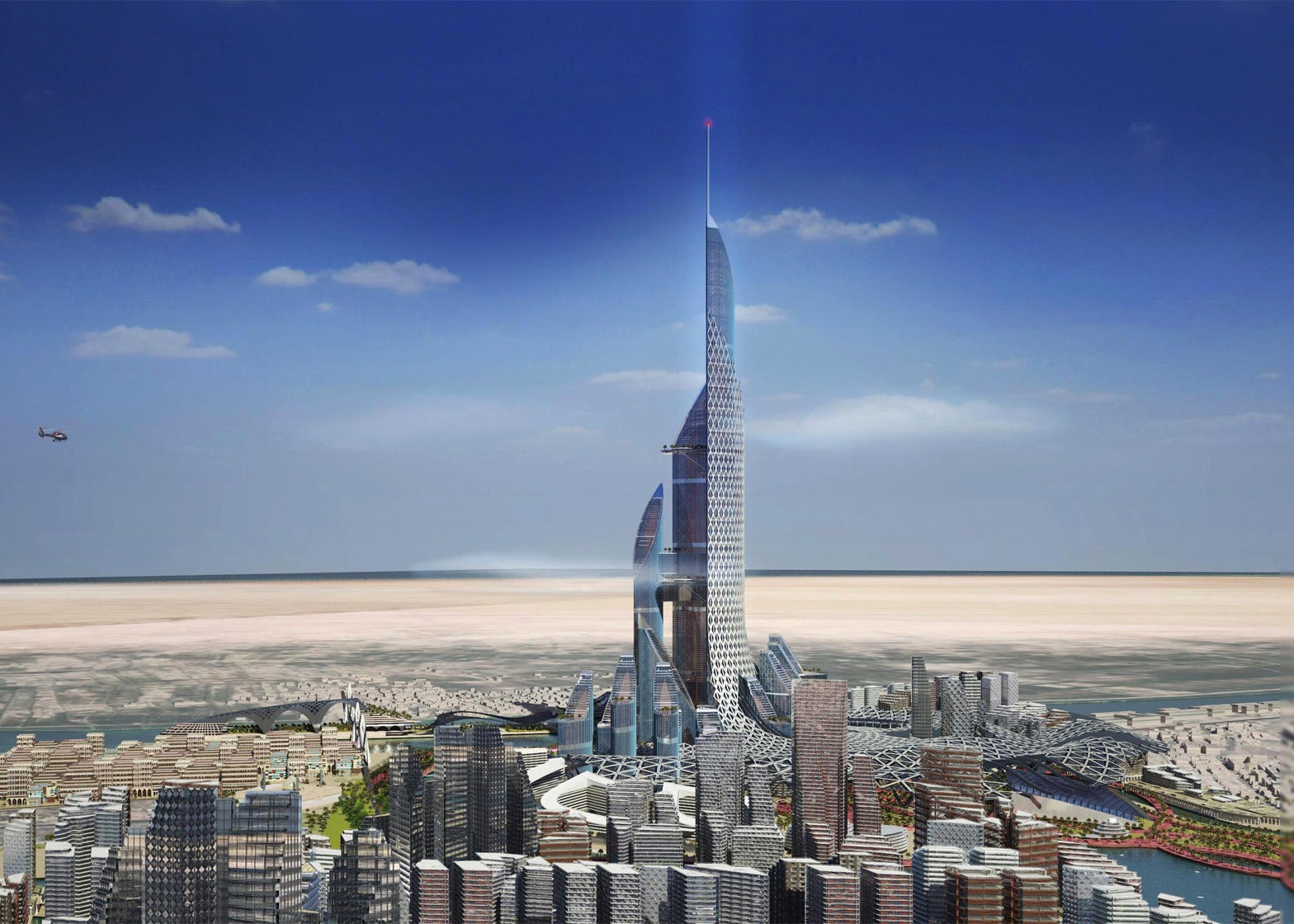In the history of tall buildings, the geographic epicenter has shifted numerous times. Almost a century ago, North American cities New York and Chicago gave birth to sky-high structures spurred by the advent of steel frame construction and the invention of the elevator. Decades later, the Far Eastern cities of China saw an influx of even loftier skyscrapers, an extreme physical manifestation of its own industrial revolution.
Finally, at the beginning of the 21st century, the contagious draw of building tall arrived in the Middle East, where Dubai’s Burj Khalifa will soon be joined by Kingdom Tower in Jeddah, Saudi Arabia. These two buildings constitute extraordinary feats of engineering that stretch the socioeconomic conditions of each city to their limit, but their monumental spires of glass could soon be dwarfed by a radical new proposal in the most unlikely of locations.

British-Iraqi-based firm AMBS Architects has revealed renderings for a “vertical city” in the southern Iraqi city of Basra, a metropolis torn asunder by war only a decade ago. Named “The Bride,” the gargantuan, 3,780-foot-tall building is dressed with a cascading veil of glass that flows down the building and across the ground far below. As it flares out at the foot of the tower, this vast curtain wall transforms into a canopy sheltering shops, cafés, restaurants, a luscious rooftop park full of native plants, and a winding river of calm, turquoise water.


According to the architects, the height of the building is not its most important component: the key feature of their design pertains to physical and programmatic interconnectivity. The superstructure is actually composed of four towers linked by a series of sky bridges allowing easy circulation between “neighborhoods” that will include their own transport systems, schools, and clinics along with the usual offices, hotels, and apartments. It is the true definition of an arcology and expands the “city in the sky” concept explored by firms such as Gensler with its 2,073-foot-tall Shanghai Tower.

Of course, the marriage of the Bride to its location in Basra will raise more questions than these renderings can ever hope to answer. First, social and economic conditions in this part of Iraq are the subject of much debate: highly reputable sources published extraordinarily conflicting descriptions of Basra in the past few days. First, The Guardianhighlighted positive developments fueled by southern Iraq’s recovering oil economy:
“If your mental image of Basra is still the war zone it was in 2003, when British and American troops first entered Iraq, it is clearly in need of an update. Basra is a prosperous and relatively peaceful city these days, “more like Kuwait than Baghdad”. The tentacles of the Islamic State are at least 600km away. There’s oil money sloshing around. There are new cars on all the new roads. Five-star hotels and a new sports stadium recently opened… The government is working on a new masterplan for the growing city, of which the publicly funded Bride would be the centrepiece.”
However, The Economist painted a very different picture detailing “the shocking decline of Iraq’s oil capital”:
“Its utilities are worse than those of Mosul, Iraq’s second city, which is controlled by IS. Power cuts last most of the day. The water is stickily saline. The air is acrid from oil plumes and from sewage that dribbles into collapsed canals which once saw Basra called “the Venice of the East”. Cholera is back. ‘Our health was better under sanctions and Saddam Hussein,’ says a local councillor.”

Even if you believe the former of these contrasting accounts, feasibility remains a major concern. As The Guardian points out, “There’s still plenty of time for this Bride to be jilted at the altar… There’s no definite site for the building yet, or a completion date.” The deliverability of such a project seems farfetched in the extreme. How will such a project be funded during an era of such political instability in Iraq?
Cynics might accuse those in charge of commissioning these renderings of making an illusory promise on a preposterous scale. Is this project actually a tower-shaped marketing campaign designed to promote the people involved on design blogs and websites across the internet? If so, the ploy appears to have worked because the project is being covered everywhere from Dezeen and CityLab to Digital Trends and Business Insider among others.

On the other hand, perhaps a positive vision of the future can inspire people to imagine what this region could be like with a sustained period of peace and economic growth. “If you go there today, people just want normality,” says architect Marcos De Andres. “They want to get on with their lives and play football. Hopefully the whole of the Middle East will be like this one day.”
Is the Bride a sky-high folly or a hopeful portrayal of tomorrow for the Iraqi people? You decide …
Yours gigantically,









